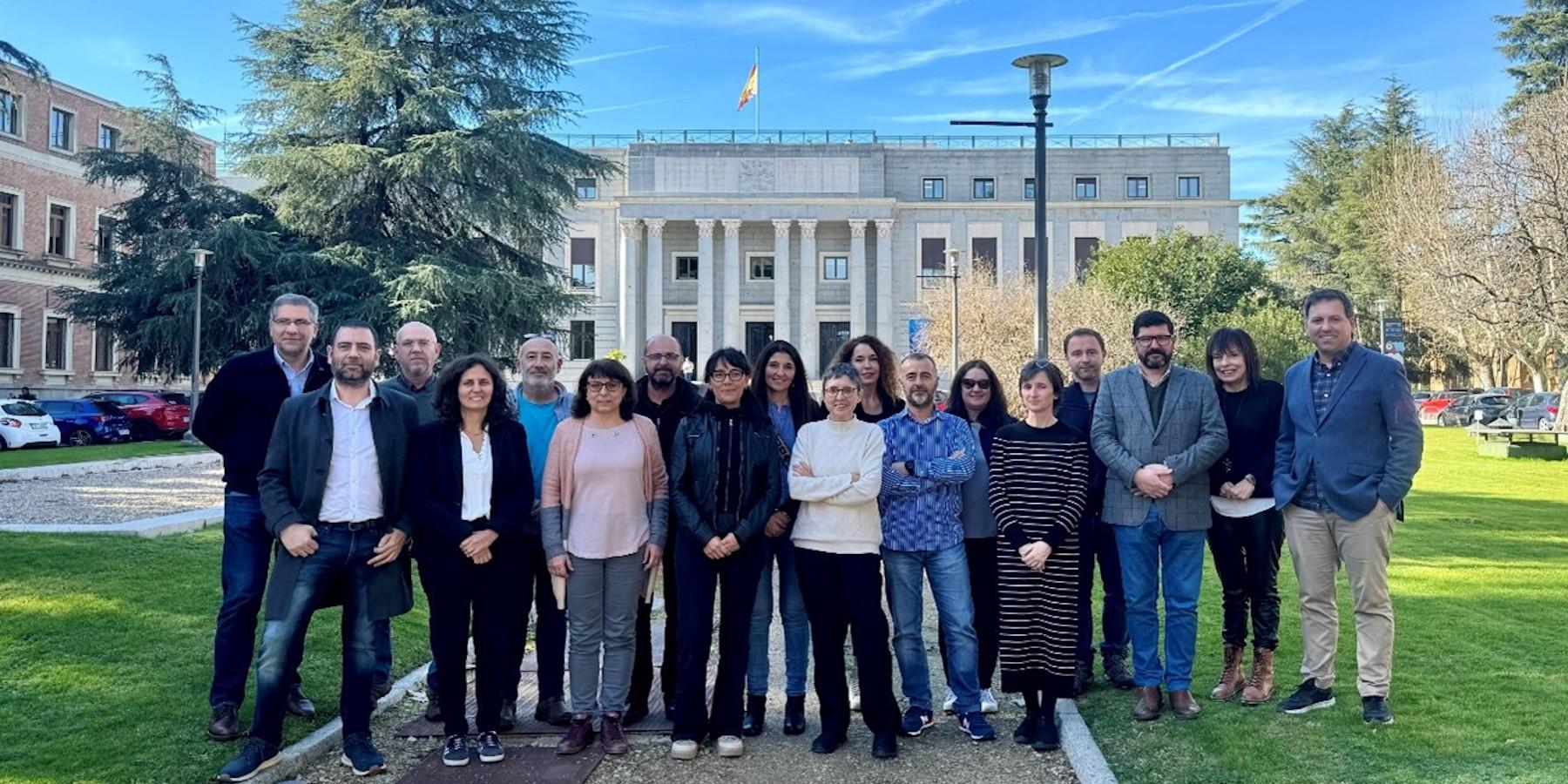European project will work on the development of low-cost wireless sensor networks for forest fire monitoring and early warning
Funded by the Program Interreg Sudoe of the European Union, it brings together institutions and companies from Spain, Portugal, France and the Principality of Andorra, with the collaboration of the Institute of Microelectronics of Barcelona. They will work on the development of devices that measure meteorological and environmental parameters relevant to fire risk assessment by municipalities and local communities in high fire risk areas.

Image of the first project meeting in Madrid with the participation of IMB-CNM research staff: Marc Salleras (fourth from the right), Llibertat Abad (fifth from the right) and Stella Vallejos (center, eleventh from the right).
To offer an economical, sustainable and reliable technology with great potential to improve the preparedness and response capacity of municipalities and their inhabitants to wildfires. This is the challenge with which the project SenForFire (Low-cost wireless sensor network for prevention and early detection of forest fires) is starting, with the collaboration of the Institute of Microelectronics of Barcelona (IMB-CNM-CSIC).
It is an initiative led by the Institute of Physical and Information Technologies of the Spanish National Research Council (CSIC-ITEFI), and is part of the EU's Interreg Sudoe 2021-2027 Program, whose priority lines of work include promoting social cohesion and territorial and demographic balance in South-western Europe (Sudoe) through innovation and the transformation of productive sectors. The Sudoe territory comprises Spain (except the Canary Islands), mainland Portugal, southern France and the Principality of Andorra.
To this end, small, low-cost, low-power wireless sensor networks (WSNs) will be deployed in rural and forest areas in seven municipalities (pilot areas) in the Sudoe where meteorological parameters, soil moisture and atmospheric variables that determine wildfire risk will be monitored over long periods of time. The data acquired by the sensors will be transmitted, stored, processed and analysed in the cloud to obtain real-time information and make predictions of the wildfire risk in the in the pilot areas (fire weather index maps, fire alert, warning and alarm messages).
"The IMB-CNM-CSIC will develop some of these sensors using silicon-based technology, in particular, new micro/nano sensors for the measurement of wind speed, infrared radiation and the detection of gases and volatiles," says Stella Vallejos, leader of the IMB-CNM contribution to the project.
The field campaigns will involve volunteers from the municipal services dealing with with wildfires and the local population.
SenForFire Consortium
On February 1st and 2nd, 2024, the kick-off meeting of the project SenForFire was held in Madrid, with the participation of fifty experts from the different institutions involved. This meeting served to pool the different technologies that will be used, to start drawing up the specifications of the pilot campaigns and of the components and systems to be developed, and to define the strategy to be followed to transfer the knowledge and technology acquired in the project to the scientific and technical community and the business sector. In addition, emphasis has been placed on the citizen variable, since one of the main objectives of this European project is to involve citizens in decision making, promoting their awareness and training, so that they can play an active role in the prevention of environmental risks.
Esther Hontañón, researcher at CSIC-ITEFI and coordinator of the project, emphasized that WSN technology will allow municipalities to manage environmental risks in a more agile and efficient way. For land owners and users, better protection of crops, pastures, forests and livestock; for SMEs to improve and expand their portfolio of high-added value products and services, as well as the qualification of their professionals. It will also provide the young population with access to quality employment and entrepreneurship and, finally, the rural population with better protection of its health, property, infrastructure, natural and cultural heritage.
SenForFire represents a pioneering experience in the application of WSN technology to the fight against wildfires due to the variety of sensors, the area of the pilot areas, the diversity of scenarios (forests, natural areas of cultural interest, urban-rural interface and urban-forest interfaces, etc.) and the duration of the campaigns (18-30 months).
The SenForFire project, which has started in January 2024 and will end in December 2026, will demonstrate the feasibility of WSNs for wildfire surveillance and early warning systems. At present, meteorological data and satellite images of the land surface (remote sensing) with low spatial and temporal resolution and low reliability (high false positive rate) are used in the Sudoe. In turn, the project will carry out Pilot Activities in Sudoe areas of different climate, orography and vegetation with prevention and/or early detection objectives. It will also develop an Action Plan for the adoption of WSNs by municipalities for meteorological and environmental monitoring purposes and an Action Plan for the training of professionals in WSNs for environmental risk management.
Other R&D centers (CSIC-CNM-IMB, CNRS-CIRIMAT and CNRS-LAAS) and universities (Extremadura, Évora, Coimbra and Toulouse) with expertise in WSN technologies; R&D centers (CSIC-INIA-ICIFOR) and agencies (AEMET and AR+I) knowledgeable and competent in forest fire prevention and detection are participating in the project together with CSIC-ITEFI; SMES that develop and offer products and services for environmental monitoring (Ray Ingeniería Electrónica and Arantec); national (MITECO), regional (Junta de Extremadura and Junta de Castilla y León), provincial (Diputación de Ávila) and local (Municipio do Fundão and Comunidade Intermunicipal do Alto Minho) public administrations with competences in forest policy and legislation, in its application and implementation in the Sudoe.





